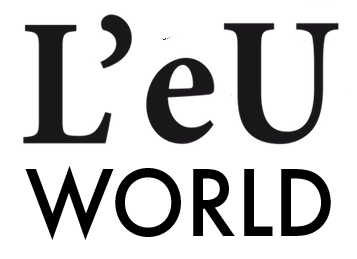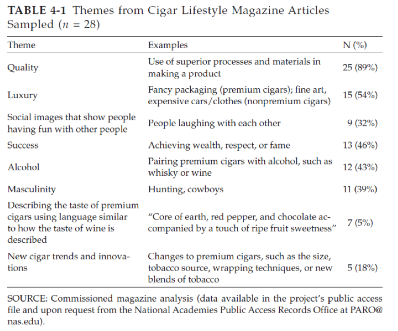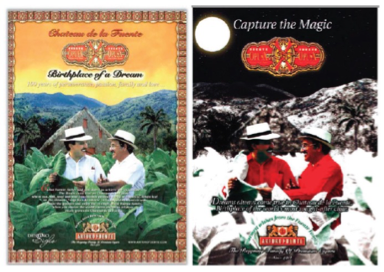Cigar online media threatened (?)
Preface: Earlier this month the 520 pages, FDA commissioned Consensus Study Report on Premium Cigars: Pattern of Use, Marketing and Health Effects posed the next chapter in a near endless chronology of regulatory affairs threatening the premium cigar industry. Combined with the current controversy around sustainable marketing, it made us think about the future of cigar media and particularly the future of online and social cigar media.
We asked the Macy D. Hanson, highly experienced attorney and avid cigar lover, to share his personal view on what’s going on exclusively with the Light ‘em Up Community:
The long and winding road of the FDA’s impending regulation of the premium cigar industry in the United States seems to be arriving toward its final destination: a burdensome regulatory framework that includes, among other unfavorable restrictions for cigar lovers, the potential FDA regulation of online cigar media. The recent federal court-ordered, and FDA-commissioned National Academy of Sciences, Engineering, and Medicine (NASEM) report on the premium cigar industry signals danger for the free speech rights of online cigar media and its users.
The committee’s analysis of the online presence of premium cigar brands identified that 77% of the brands examined had an official website, 66% had a Facebook account, 66% had an Instagram account, 57% had a Twitter account, and 23% had a YouTube account.
These findings led the committee to conclude:
“There is conclusive evidence that premium cigar companies have online and social media presences not captured by traditional methods of tracking marketing expenditures.”
Based upon the findings related to online cigar media in the March 2022 NASEM study, I am starting to fear that cigar media, including online, will earn a place on the chopping block of federal regulation with the FDA.
Let’s get to the brief backstory for how we got here: In 2007, the late Senator Ted Kennedy (D-Mass.) first introduced legislation that has become the thorn in the side of the premium cigar industry in the U.S. – the Family Smoking Prevention and Tobacco Control Act. This legislation passed Congress in May 2009, after the Democratic party gained control of Congress and the White House in the 2008 elections. Then President Obama signed the Act into law only one month later, in June 2009.
This Act supplied the FDA with the legal authority to regulate premium handmade cigars for the first time in American history (the U.S. federal government had no regulatory authority over premium handmade cigars prior to the enactment of the Family Smoking Prevention and Tobacco Control Act of 2009). Additionally, the Act created a new division within the FDA, called the Center for Tobacco Products, to regulate all tobacco products, including premium handmade cigars. Even further, the Act requires tobacco companies, including premium handmade cigar brands, to disclose all the ingredients used in their products, along with requesting FDA approval whenever these ingredients would change.
Next, in June 2016, after the FDA had unveiled its proposed regulations of the premium cigar industry, three cigar industry groups – the Cigar Association of America, Cigar Rights of America, and what is now known as the Premium Cigar Association – sued the FDA in federal district court in Washington, D.C., to stop the implementation of various aspects of the FDA regulations sought to be imposed on the premium cigar industry.
In strategic response to the premium cigar industry’s D.C. district court litigation against the FDA, referenced above, and in response to other federal court litigation that medical lobbying groups have filed in Maryland district court claiming that the FDA has taken too long to implement its final rules under the Family Smoking Prevention and Tobacco Control Act of 2009, the FDA proposed a compromise to the various federal courts – that it be permitted to commission a formal study covering the premium cigars industry and its regulation, and that this study would be published and reviewed by the FDA before the FDA could mandate that premium cigars to go through the strict product approval process for other tobacco products like e-cigarettes and machine made cigars.
The NASEM study and its recommendations
On March 10th (2022), the National Academy of Sciences, Engineering, and Medicine (NASEM) released its highly anticipated study on premium cigars. According to the study, with the appropriately bureaucratic title of Premium Cigars: Patterns of Use, Marketing, and Health Effects “at the request of the Food and Drug Administration (FDA) and the National Institutes of Health, the National Academies of Sciences, Engineering, and Medicine (NASEM) convened an expert committee to examine four premium cigar topics: product characteristics, patterns of use, marketing and perceptions, and health effects. The resulting report includes 13 findings, 24 conclusions, and nine priority research recommendations for federal support.”
The most concerning, and surprising, of the study’s 13 “findings”, 24 “conclusions”, and nine “priority research recommendations” center on calls for further study of online cigar media that can be used as support for future FDA regulation (see: restrictions) on online cigar web sites, cigar blogs, cigar social media, and YouTube and Facebook live broadcasts that feature premium cigar related content.
Chapter Four of the NASEM study, “Cigar Marketing and Perceptions”, should raise the hairs on the necks of all creators, publishers, and consumers of online cigar media. Quite simply, this chapter of the NASEM study lays out the case and the foundation for FDA regulation of online cigar web sites, blogs, and video and podcast platforms. To quote from the introduction of Chapter Four of the NASEM study: “[t]his chapter summarizes what is known about cigar marketing and promotion, including for ‘premium’ cigars, and consumers’ perceptions. FDA charged the committee to examine the health effects of premium cigars. This chapter recognizes the highly effective nature of tobacco advertising and promotion on use behaviors that in turn affect the health consequences of cigars.”
The NASEM study emphasizes that “[c]igar use, including of premium cigars, began to increase in 1993 when promotional activities increased.” According to the NASEM study, “the cigar market was fairly stagnant until the release of Cigar Aficionado in the fall of 1992; the magazine’s founder, Marvin Shanken, said that it was launched in response to an increase in premium cigar use. Cigar Aficionado expanded the popularity of cigars, helped launch new magazines, and promoted premium cigars in news stories and at social events.” The factors that support the “strong conclusion” that Cigar Aficionado caused an increase in premium cigar smoking in the 1990’s, per the NASEM study, are studies purportedly showing that:
1) Brief exposure to tobacco advertising influences adolescents’ attitudes and perceptions about smoking and adolescents’ intentions to smoke; and
2) A temporal relationship exists between exposure to advertising and adolescent initiation of smoking and subsequent regular smoking.
Thus, the NASEM report concludes that “marketing and promotion of tobacco products is a critical component of sales strategies and still influence their sale and use.”
The NASEM study begins with a discussion of tobacco marketing, in general: marketing. Tobacco marketing, which includes a range of strategies used by the industry to promote its brands and products, is central to how the industry develops positive perceptions to persuade nonusers to initiate use and current users to continue. A strong body of literature shows that tobacco marketing plays a powerful role in shaping positive perceptions of tobacco products and lower risk of harm and in influencing tobacco use behaviors, including initiation, continued use, and decreased cessation. Tobacco marketing is often tailored and targeted to specific populations, such as youth, women, and racialized and ethnic groups, particularly African American/ Black communities. Sufficient evidence indicates that the tobacco industry does not self-regulate its marketing practices for any product and that restrictions on tobacco advertising and promotion can influence health consequences, including addiction and decreasing exposure among targeted populations and the deceptive or misleading nature of marketing.
Next, the study turns to print advertising in the premium cigar space, giving particular focus to Cigar Aficionado, Cigar Journal, and Cigar Snob magazines.
Premium cigars have been presented to the public through promotional and marketing activities in print media, which includes direct mailers, magazines, and newspapers. Premium cigars are widely promoted in print and, in recent years, digital cigar lifestyle magazines (e.g., Cigar Aficionado, Cigar Journal, Cigar Snob) devoted to promoting them. After Cigar Aficionado began, other magazines were launched, including Smoke in 1996 by tobacco trade publisher Lockwood and Cigar Snob, a bimonthly publication that claims to bring “a fresh approach to the old, stuffy take on cigars with stunning photography, impactful editorial, and honest, easy to read cigar ratings”. Other lifestyle magazines also include premium cigar advertising.
Finally, the study moves to a specific discussion of online cigar media, with proposed recommendations for further study: Premium Cigar Companies’ Print and Electronic Media Advertising.
“...[D]ata provided to the committee had two separate paid ad spreads from a single premium cigar brand (Arturo Fuente) in a free in-flight magazine of a major U.S. airline. These ads featured themes of history, culture, and family, and the rate spent for them was $159,000 and $53,100, respectively.
One premium cigar brand, Drew Estate, had several e-mail ads that promoted an in-person entertainment event/festival to celebrate its 25th anniversary and ‘The Rebirth of Cigars Movement,’ promoting branded items, new cigars, and live music featuring rock and hip-hop. These ads used graffiti images with a logo of the Manhattan Bridge and pictures of musical artists who would be featured at the festival; these DJs and musicians gained popularity from the 1990s through mid-2000s. Some of these e-mail ads featured only the brand logo with an image and a description of DJs and musicians without the mention of any premium cigar products. These promotional efforts that highlighted DJs and musicians were part of a larger tobacco industry movement to use music to appeal to consumers. This same strategy was used for menthol cigarettes and the Kool Mix Campaigns and Newport music festivals.”
All of this, however, was merely the windup for the NASEM study’s discussion of premium cigar “marketing” on the Internet and social media.
The following are the most relevant portions of this most concerning section of the NASEM study: Marketing on the Internet and Social Media. The Internet, which includes social media platforms, has become a popular venue for the tobacco industry to market products because it is lightly regulated and can reach a large number of people quickly at a low cost... Since 2008, evidence is growing that tobacco promotion is occurring on social media using strategies such as influencers and celebrities, paid online banner advertisements, and brand accounts without sufficient regulation. The committee found no published studies specifically examining premium cigar marketing on the Internet and social media. However, emerging data indicate that non-premium cigar products (e.g., little cigars and cigarillos) are heavily marketed on social media platforms, such as Instagram and Twitter.
As the Internet and technology rapidly evolve to engage and entertain their users, tobacco companies that market using these sources will also likely evolve, so studies will need to keep up with these changing trends. For example, mobile phone apps could be one way to market premium cigars. In 2012, one study examined the presence of pro-tobacco apps by searching the keywords “smoke,” “cigarette,” “cigar,” “smoking,” and “tobacco” on the Apple App Store and Android Market and found 107 apps. Apps relevant to cigars included one that showed where to buy tobacco products, including cigars (the authors did not differentiate cigar type); one for a premium cigar users advocacy group (Cigar Rights of America); and a “Cigar Smoker” app (the authors did not differentiate cigar type, but the example images included premium cigars), which provided information about cigar news, reviews, and deals, as well as options for users to share their own photos of their cigars on social media.
The most troubling aspect of this entire study, though, is the explicit,
“black-and-white conclusion of NASEM that the FDA should start engaging in the “tracking” and study of premium cigar brands’ websites and online cigar media presence and expenditures,”
including cigar influencers on Facebook and Instagram, presumably. Based upon these findings related to online cigar media in the March 2022 NASEM study, I am starting to fear that cigar media, including online, will earn a place on the chopping block of federal regulation with the FDA. According to the tenor of the NASEM study, the FDA seems to be shifting focus to social media and lifestyle publications, all of which are now predominantly online. This was the playbook from my childhood with cigarettes. Lawsuits filed against cigarette companies for unfair and misleading advertising effectively killed Joe Camel and had the practical effect of banning all print ads, and essentially all media, deemed to "promote" cigarettes. This includes the use of color in print advertising.
In short, the First Amendment does not exist for the tobacco industry. I fear the FDA will be coming for cigar media before, or when, they come for the premium cigar manufacturers. We may still be able to smoke cigars (in plain packaging). We just will not be able to discuss them on the internet with other people. At least not with some sort of regulatory apparatus in place to protect us from ourselves.
So what now?
The first takeaway from this article is that the First Amendment needs to become a focal point of the fight of the rights of premium cigar smokers and brands. Considering the fact that the under 21 year old demographic is on the internet and social media more than any other age group, the FDA would not be unreasonable to focus on online cigar media, and cigar social media, as a primary battle on fighting the purported marketing of premium handmade cigars to “children” (those under the age of 21; it seems odd, if not plain wrong, to label 18-20 year old’s as “children”)
The NASEM study is merely a recommendation on what the FDA should do. The FDA can go beyond its scope, if it chooses. And I believe that it will. If cigar advertising gets labelled as "false advertising" or some sort of "unfair" trade practice, as occurred with cigarette advertising, then I do not see how the potential liability from consumers and government health programs will end with the manufacturer. This is merely my opinion and I could be wrong. But the speech aspect to the FDA deeming regulations is starting to increasingly worry me as both a cigar lover and a lover of freedom of expression.
This article is to provide a call to action of all premium handmade cigar manufacturers, brands, distributors, retailers, and consumers: we must vigorously support the legal and lobbying fight of the CRA/CAA/PCA/CROW against overreach on the part of the FDA in implementing its future regulations of the premium cigar industry. This means financial support, especially.
Many major cigar conglomerates, who this year alone have posted tens, and in some cases, hundreds of millions of dollars of annual profit, have not given one single penny to the legal battle against the FDA regulations. This must change; and soon.
The long and winding road of the FDA’s impending regulation of the premium cigar industry in the United States seems to be arriving toward its final, troubling, destination: federal regulation of online cigar media and cigar social media. The entire cigar industry – and especially those companies who profits the most from it – must step up and financially contribute to this fight.
Yours,
Macy
About Macy Hanson
Macy Hanson owns a boutique business law firm located in Madison, Mississippi. His practice focuses on complex, high-stakes litigation - including the litigation of large class action lawsuits - as well as the handling of sophisticated business transactions for corporate clients.
Sources: https://nap.nationalacademies.org/catalog/26421/premium-cigars-patterns-of-use-marketing-and-health-effects





